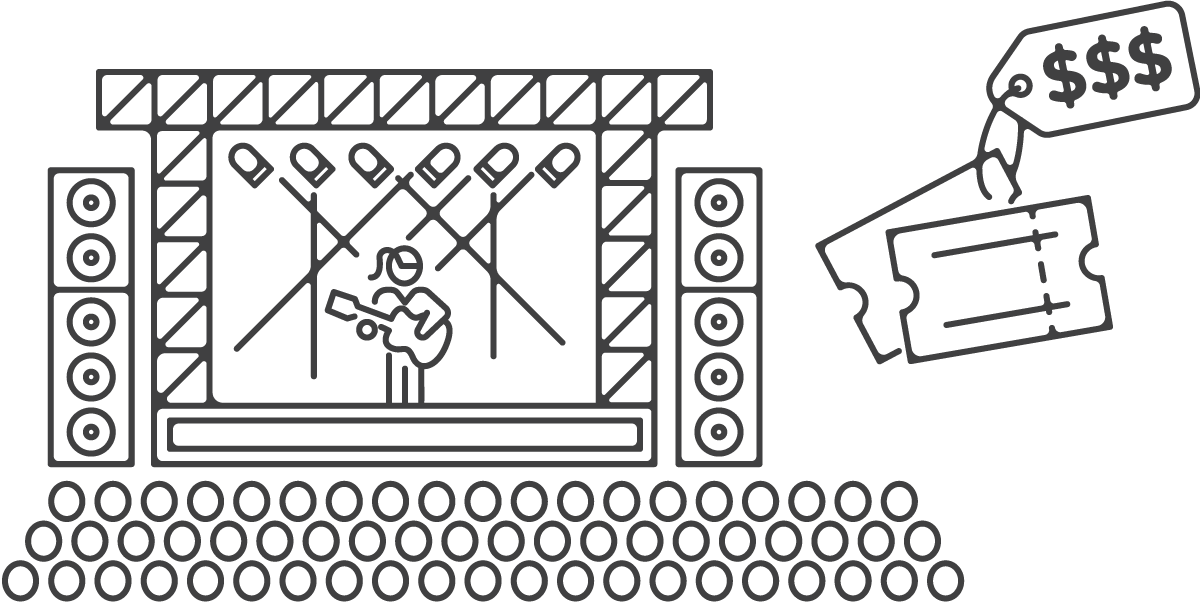In business, it seems like balance is always the focus. From work-life balance to balancing accounts or even balancing supply and demand. However, true growth and success is not when we strive for symmetrical balance but is unlocked when we lean into the asymmetries of business.
When it comes to investing, an intelligent investor looks for areas in the market where they can benefit from the “gap” in the market. This gap is sometimes referred to as the delta or in more simpler terms it is just where the opportunity is. For a market to have opportunity there must be one party that sees it for its potential and the counterpart that sees it for what it’s lacking. One sees it as the value increasing and the other sees this as the set value for them to sell it to get the most.
This happens in all markets. From the used car market to the stock market… and yes, even in your business. Your business relies on your customer seeing more value than the price you are charging. There must be a “gap” or you’ll have very little buyers.
Theoretically, as this gap gets larger the perceived value increases. So you can safely say that in business you want to create as large of a gap as possible to succeed. Similarly, as with investing, the best investments are ones that have asymmetric returns where your upside is disproportionate to your cost/risk in the investment position. For example, if you knew the bright future of a sector or business and the current value doesn’t reflect this then you have an edge that disproportionately leans toward positive gains. This is the same asymmetrical approach you want with your business! Just as the Pareto Principle has proven that 80% of results are derived from 20% of efforts, we must leverage this asymmetry.
The Business of Asymmetry
A basic example of asymmetric advantages in your business would be selling a skill that comes to you naturally or is enjoyable for a premium. Your talent is desired and it’s a win for you. This is how actors, musicians, athletes, and artists get paid asymmetrical paychecks. Taylor Swift plays a few hours on stage and is exponentially paid due to the brand she has built. The great thinker can solve a problem in minutes due to the brain and experience they have and can be paid asymmetrically just as the neurosurgeon gets paid astronomically for working on brains.
Companies also can create this asymmetry by increasing volume of products sold which inevitably drives down their cost per unit. They can also build facilities and systems that drive down costs as well. From Amazon to Tesla and Nike — this is the game and how they create returns by leveraging their reach and facilities.
Now, you’re most likely not on this level of enterprise, but don’t worry — there is hope. This hope is found in the power of brand. Yes, you will have opportunities to reduce your cost per unit or you may even have a skill that you enjoy or that can be systemized, but these will not matter if you don’t first have the desirability from the market. You see, Taylor Swift is able to pull in major bucks because her brand and product have major desire (demand). Just as a neurosurgeon charges top dollar because they are so niche in their expertise that the desire for them is specific and powerful.

Your business can use the same strategy through brand to build something asymmetrically special. Just as these top billing names and professions lean into their uniqueness and expertise, they create an asymmetry between their time, costs, and efforts with the reward they receive. Brand is this unique narrative that strategically packages your business and offerings to create this type of asymmetrical leverage.
If your business is great at a certain offering and you’re slowly becoming known for it, then it will cost very little to lean more into this strength and could even reduce costs. Just as Tesla leaned into manufacturing optimization and the neurosurgeon leaned into a certain expertise, your business can focus on certain strengths that will increase desirability.
Business Investment
What scares businesses from leaning more into their strengths is that feeling of imbalance. They feel their business must be diversified across the market so it can stay alive. As much as I see a business as an investment tool, it is different than a well diversified stock portfolio. The difference is that your portfolio isn’t battling in a market, it is partaking in one. So naturally you spread out your risk to “balance” your exposure. Your business on the other hand is on the battleground. It is in the market and fighting for its life. In this battle you need accuracy and reach. Just as the timeless spear is known as one of the best weapons in battle, it isn’t diversified with several edges or purposes. It is minimal and easy to manufacture. It is very focused to a single point and reaches beyond other weapons with the unique ability to pierce armor and glide past shields. The spear does come with some risks, but these risks are brought with much reward as the weapon proved far more effective than many others.
This is your business and offering. A single point of focus that can accurately enter a market and move the needle. It can reach and prevail while you have other options for when the future situations come. Your business isn’t a portfolio of stocks or bonds, but an active ingredient to create asymmetrical returns through focus and expertise.

